NVIDIA nForce4 Ultra: Biostar's Performance Surprise
by Gary Key on February 16, 2006 12:05 AM EST- Posted in
- Motherboards
Basic Features: Biostar TForce4 U 775
The Biostar TForce4 U 775 is a member of the TForce4 Series product family and, as such, is a value-based board targeted towards the enthusiast user who is concerned about price and performance. The board ships with an accessory package that includes the standard assortment of IDE/SATA cables and power connectors. Biostar also includes a driver CD along with several desktop utilities for monitoring and tuning your system.
Overall, the BIOS options are very good for a chipset that NVIDIA has stated is not optimized for overclocking. The board's bios even includes a built in memory tester based upon Memetest86+ version 1.55. We would like to see more memory voltage options included in the BIOS along with the ability to adjust the PCI bus speeds.
| Specification | Biostar Tforce4 U 775 |
| CPU Interface | LGA775-based Pentium 4, Pentium 4 XE, Celeron D, and Pentium D processors |
| Chipset | NVIDIA nForce4 Ultra - SPP (C19, rev. C1) NVIDIA nForce4 Ultra - MCP (MCP51, rev A20)(nForce 430) |
| Pentium D Support (Dual-Core) | 820D, 830D, 840D, 840EE, 920D, 930D, 940D, 950D, 955EE |
| Front Side Bus | 1066 / 800 / 533 MHz |
| Front Side Bus Speeds | Default, 450MHz ~ 1300MHz in 1MHz increments |
| Memory Speeds | Default, 400MHz ~ 1300MHz in 1MHz increments |
| PCI Bus Speeds | Default |
| PCI Express Bus Speeds | Default, 100MHz ~ 148.4375MHz in various increments |
| Set Processor Multiplier | 12 to 60, (in 1 step increments) |
| LDT Multipliers | 1x, 2x, 3x, 3.5x, 4x, 5x |
| Core Voltage | Default, 1.1000V to 1.8250V (in 0.0125V increments) |
| DRAM Voltage | Default, 2.05V, 2.10V, 2.25V |
| SPP Chipset Voltage | Default, 1.53V, 1.58V, 1.61V |
| FSB Voltage | Default, 1.30V, 1.40V, 1.50V |
| Memory Slots | (4) x DIMM, max. 4GB, DDR2 667/533/400, non-ECC, un-buffered memory |
| Expansion Slots | (1) x PCI-E x16 (operates in 1x16 mode) (2) x PCI-E x1 (operates in x1 mode) (4) x PCI 2.2 |
| Onboard SATA | NVIDIA nForce 430: (4) x SATA II |
| Onboard IDE | NVIDIA nForce 430: (2) x UltraDMA 133/100/66/33 |
| SATA/IDE RAID | NVIDIA nForce 430: (4) x SATA II RAID 0, RAID 1, RAID 0+1, RAID 5 |
| Onboard USB 2.0 | (8) USB2.0 ports |
| Onboard LAN | Realtek 8201CL PCI 10/100Mb/s LAN - PHY |
| Onboard Audio | Realtek ALC-850, 8-channel capable Audio |
| Power Connectors | 24-pin ATX 4-pin ATX 12V |
| Back Panel I/O Ports | 1 x PS/2 Keyboard 1 x PS/2 Mouse 1 x Parallel 1 x Serial 1 x Audio I/O Panel 1 x RJ45 4 x USB |
| Other Features | (O.N.E.) - Overclocking Navigator Engine (C.R.P.) - CMOS Reloading Program (M.I.T.) - Memory Integration Testing (I.F.P.) - Integrated Flash Program (S.R.S.) - Self Recovery System Hardware Monitor - Windows Based Overclocking Utility - Windows Based (Limited Functionality) Smart Fan Function - Windows Based Live Update - Windows Based BIOS Update Program |
| BIOS | N4UIA126-BST (1/26/06) |
The Biostar TForce4 U 775 is a member of the TForce4 Series product family and, as such, is a value-based board targeted towards the enthusiast user who is concerned about price and performance. The board ships with an accessory package that includes the standard assortment of IDE/SATA cables and power connectors. Biostar also includes a driver CD along with several desktop utilities for monitoring and tuning your system.
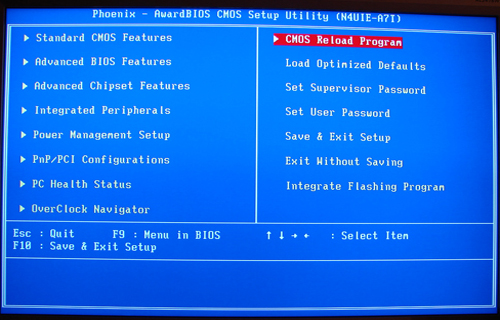
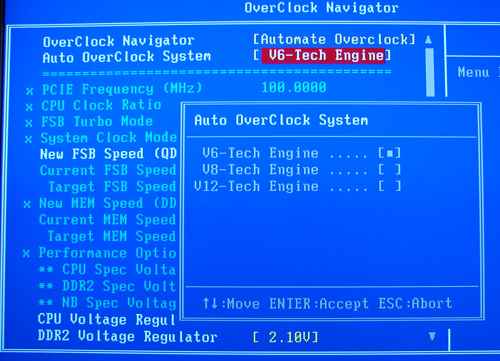
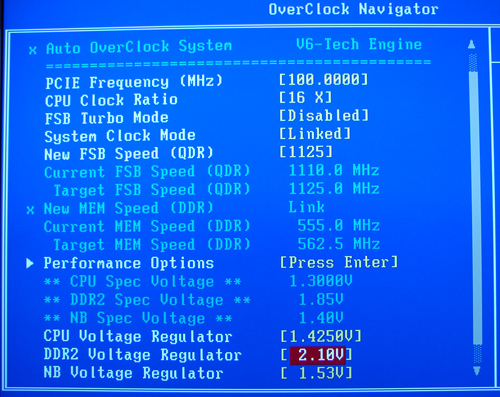
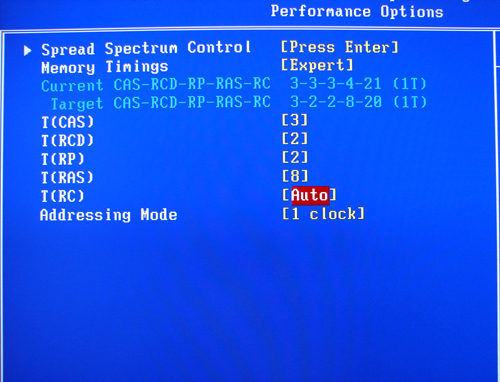
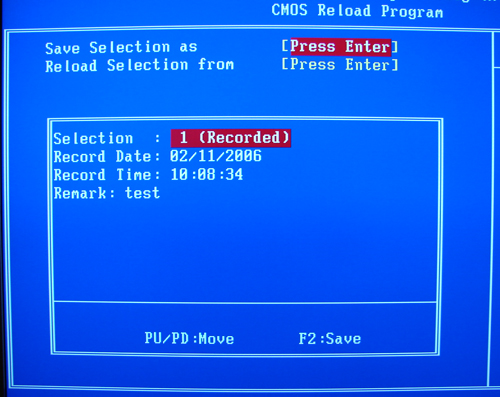
Overall, the BIOS options are very good for a chipset that NVIDIA has stated is not optimized for overclocking. The board's bios even includes a built in memory tester based upon Memetest86+ version 1.55. We would like to see more memory voltage options included in the BIOS along with the ability to adjust the PCI bus speeds.










31 Comments
View All Comments
Calin - Friday, February 17, 2006 - link
What about sorting the graphs based on the min frame rate?:) I guess some people are never happy ;)
Great job, and a nice article!
yacoub - Thursday, February 16, 2006 - link
Once you've owned a passively-cooled motherboard like any of the recent Asus ones, it's hard to even look at one with a fan on it. It also makes shopping for a motherboard a LOT easier because you just cross off all the fan ones right away (unless you're a mod fiend who will actually go through the trouble of buying a chipset cooler or two and rip the fan assembly off the brand new expensive motherboard and hope that cools it well enough).I hope more manufacturers take up the passively-cooled trend.
Gary Key - Sunday, February 19, 2006 - link
I disabled the fan and only witnessed a 2c increase on the MCP. Biostar could have saved a few cents and put towards a Gigabit Lan solution. ;-)Marlin1975 - Thursday, February 16, 2006 - link
Sound and ethernet. Why do companies keep using the realtek junk. bad quality (part and drivers) and juts shows a motherboard company does not care when they use realtek.Any time I see realtek on a board I think the sound and even ethernet were a after thought like "Oh we forgot sound. Lets just put the cheapest POS on there. OK"
COME ON. Good chipset but you come so close then put junk on for sound and so forth.
Myrandex - Thursday, February 16, 2006 - link
For me that issue doesn't matter at all. My Sound Blaster Audigy 2 is still doing its job nicely, and getting a nice onboard sound solution still gets disabled all the same. Now for integrated SB Giga-bite ethernet is something that comes into play with my decisions, and I have been real happy with Giga-byte putting ieee1394b controllers on their boards (and am hoping that external HDD 1394B cases fall in price sooner or later). Integrated wireless is a neat feature some boards have as well.Wesley Fink - Thursday, February 16, 2006 - link
Realtek does have some really cheap audio and LAN chips, but they also have some pretty decent products. In the High Definition area the ALC882 is a really good audio codec with an excellent feature set that produces decent sound and very low noise. If you go through some recent reviews you will see both Gary and I have praised the Realtek ALC882, which is NOT included on this Biostar board :-)Marlin1975 - Thursday, February 16, 2006 - link
yea but you also go on about bad drivers that are STILL in need fo a update and other issues. So sorry but realtek is still junk in my book. That and with so many other options from VIA's envy, c-media, etc... why use something that has problems and are STILL being addressed today?DigitalFreak - Thursday, February 16, 2006 - link
I agree. Using Realtek for LAN is bad enough, but using a PCI solution? That's unacceptible. Even if you don't care about GbE, the CPU utilization is rediculous!Peter - Tuesday, February 21, 2006 - link
The RTL8201 is not a PCI ethernet chip, it's just a PHY companion to the chipset's own engine. This is a research error in the article.http://www.realtek.com.tw/products/products1-2.asp...">http://www.realtek.com.tw/products/products1-2.asp...
The abysmal performance rather more likely stems from transmission errors or poor signal quality - which would point to a damaged or poorly laid out board, or bad cabling.
PHYsical interface chips have zero influence on throughput, as long as signal integrity is being maintained - and as far as that is concerned, Realtek's solution is definitely up to the job. Question is, is the mainboard's layout?
Peter - Tuesday, February 21, 2006 - link
... and of course, we need to keep in mind it's a 10/100 PHY, not a gigabit PHY.